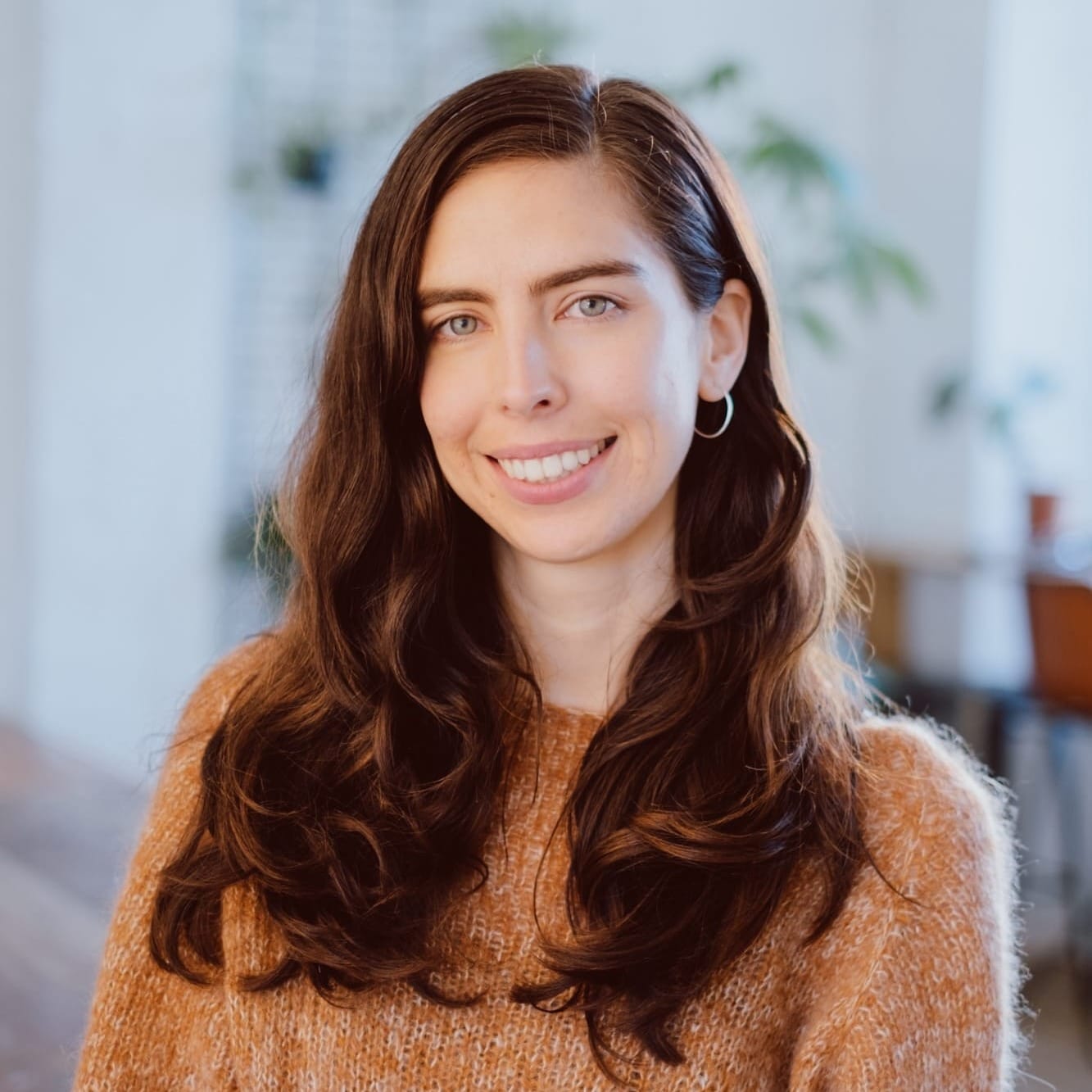Cocoa plays a central role in the West African rural economy. Nearly 60% of the world’s cocoa is grown around the Gulf of Guinea, where countless smallholder families depend on it for their livelihoods.
But behind a delicious chocolate bar lies a complicated truth: the growing global demand for cocoa is driving deforestation, eroding soils, and threatening biodiversity across West Africa.
Thankfully there is an alternative path, and this was the backdrop for my visit with Ecosia’s long-standing partner APAF (Association pour la promotion des arbres fertilitaires) - agroforestry pioneers who have been active in the region for over 30 years.
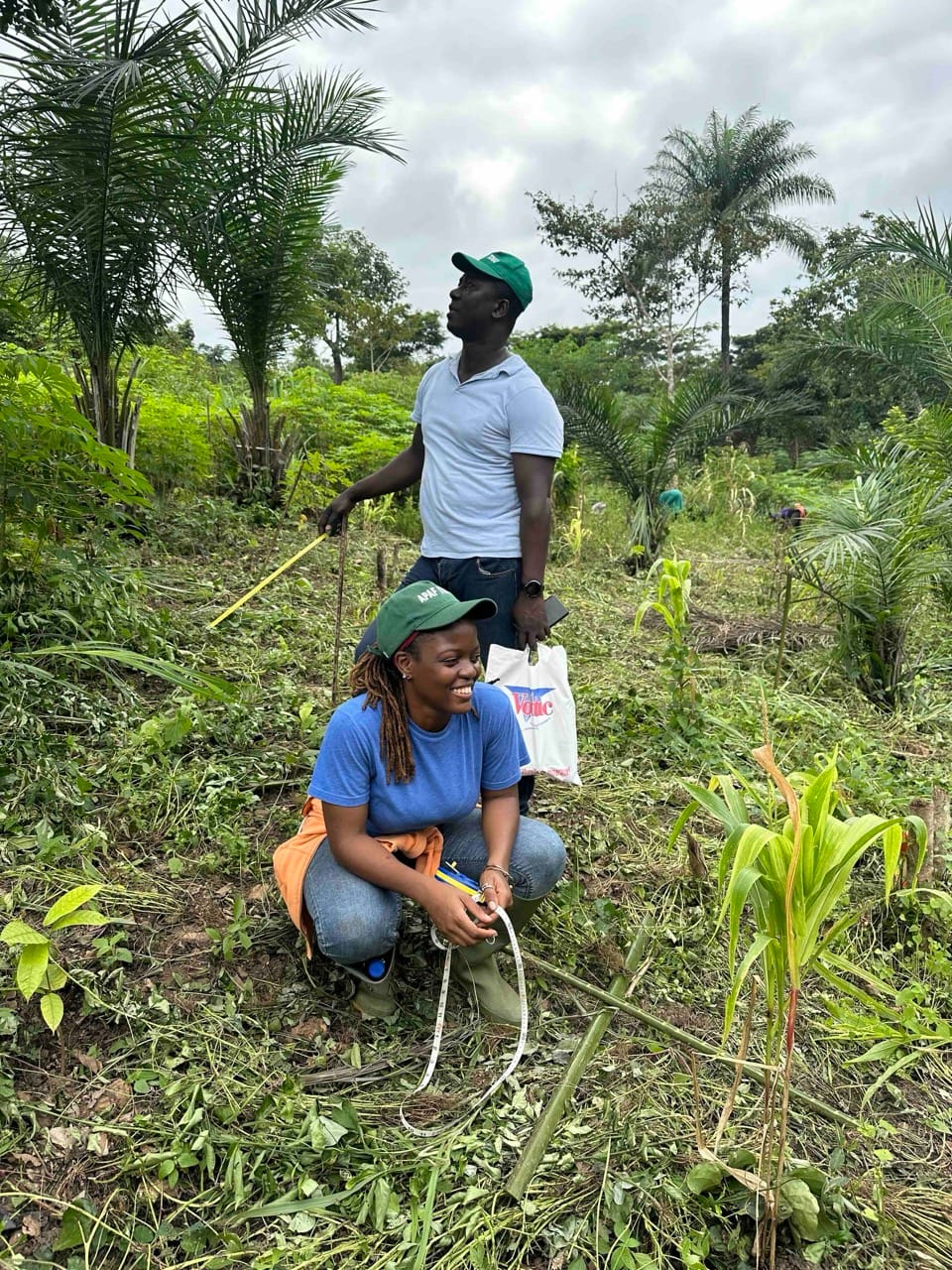
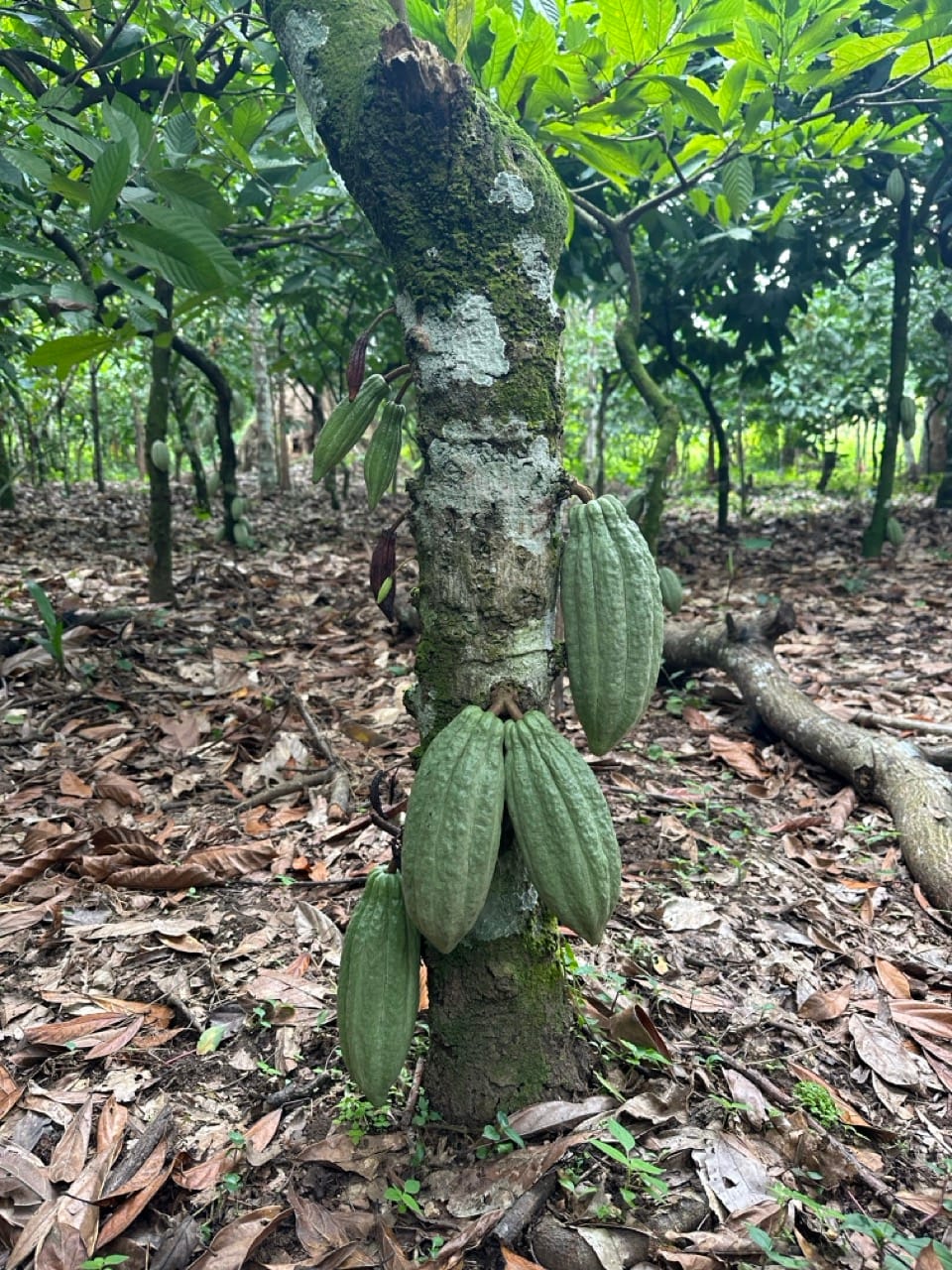
APAF staff monitoring a cocoa plot; A plot of cocoa trees
We first partnered with APAF in Côte d’Ivoire in 2019, and expanded to Togo in 2024 with the ambitious goal of planting 6.8 million trees. Just months later, 2.23 million trees are already growing across over 1,500 sites. I traveled to Togo to see the progress up close.
Huge thanks to the APAF Togo team and local farmers for sharing their insights.
From monocultures to thriving forests using fertilizer trees
Cocoa is a vital cash crop for Togo and its neighbors, but it is often grown in vast monocultures reliant on chemicals which deplete soils, pollute water, harm biodiversity, and endanger farmers' health. APAF promotes an alternative method: the ancestral practice of planting fertilizer trees in cocoa plots.
Fertilizer trees enrich the soil naturally by fixing nitrogen from the air and shedding nutrient-rich leaves. When grown from seed, they develop deep taproots (10-30 meters) to draw up essential minerals and water. Their roots also host nitrogen-fixing bacteria (rhizobia) and fungi (mycorrhizae), making nutrients available to surrounding crops.
By creating a natural source these trees eliminate the need for synthetic fertilizers, which are costly, fossil fuel-intensive (two tonnes of fuel per tonne of fertilizer!), and often leach into groundwater.
Widespread use of fertilizer trees also curbs slash-and-burn farming. As population growth pressures agricultural land, plots are cultivated until exhausted and abandoned - with no chance to regenerate - driving farmers to clear forest fringes. Integrating fertilizer trees restores soil health, allows continuous cultivation, and reduces deforestation - creating a sustainable model that supports both agriculture and livelihoods.
How APAF works on the ground
APAF has refined its model over three decades, starting in Togo in the early 90s and later expanding to Côte d’Ivoire, Cameroon, Senegal, Benin, and most recently Burundi.
Field officers are central to implementation. They onboard farmers, work closely with them to integrate fertilizer trees, provide technical support so they can grow healthy trees and nurture their lands, and teach them how these practices improve soil, yields, and family futures.
Farmers in the APAF program can take seedlings from community nurseries home to plant. Many seeds come from older APAF sites, creating a closed cycle of regeneration.
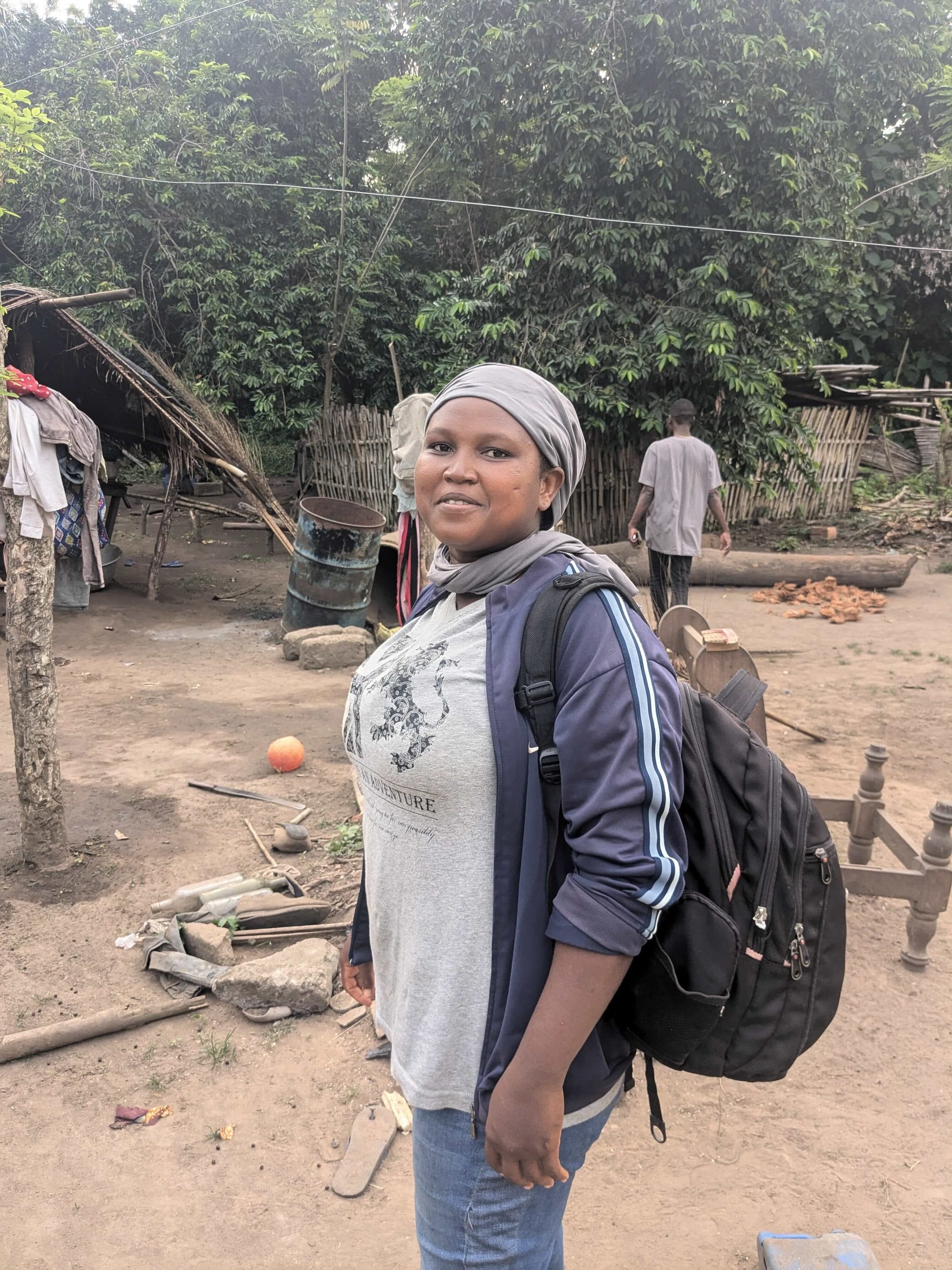
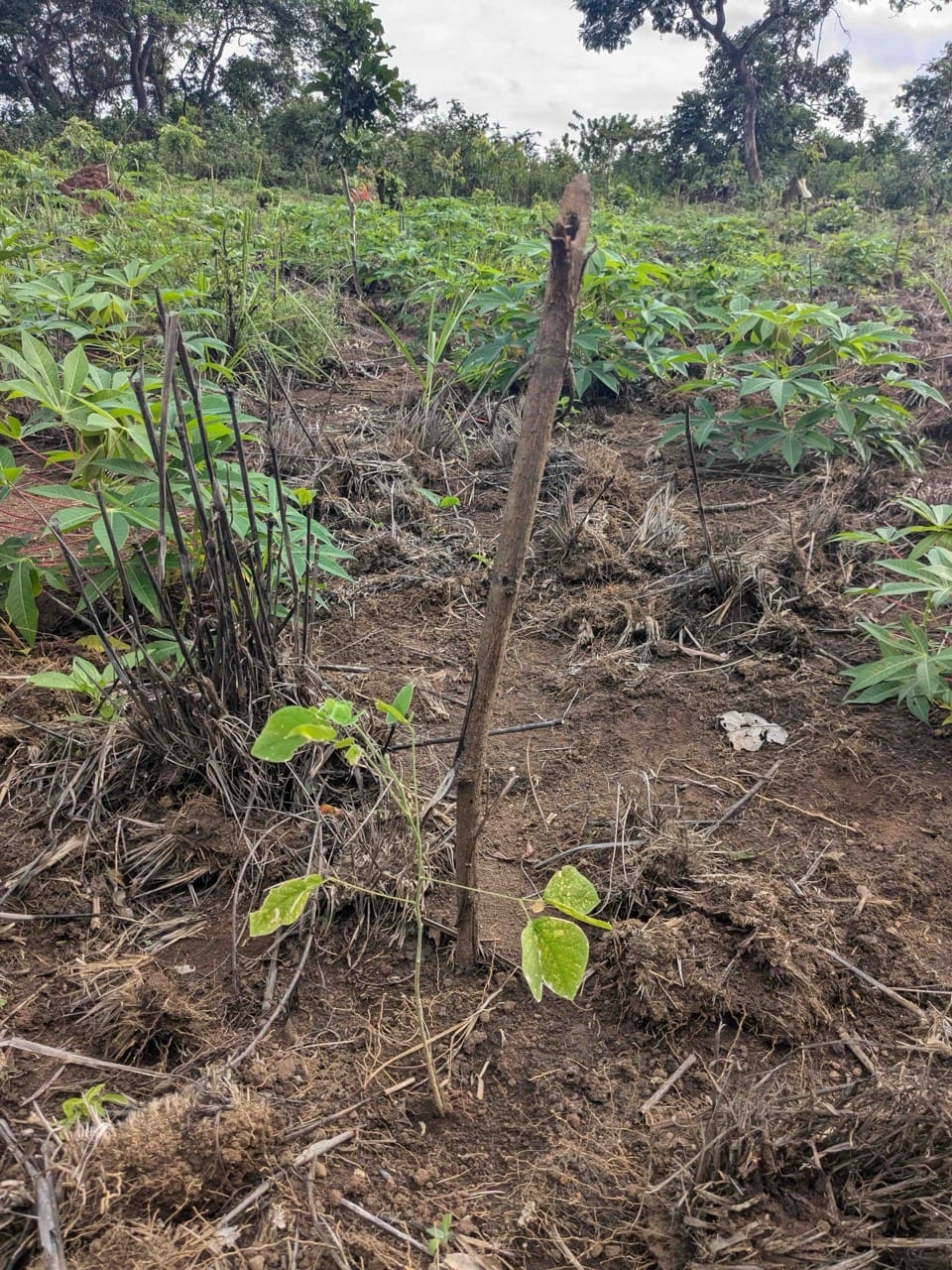
APAF field officer (locally known as Conseillère Technique en Agroforesterie - or CTAs) KOLA Kpetan Hodalo; A Samanea Saman seedling (one of the main fertilizer species) marked for ANR
Alongside tree planting, APAF promotes Assisted Natural Regeneration (ANR), which encourages wild seedlings to grow rather than be cut during regular maintenance clearings. Together, farmers and field officers identify and mark naturally occurring seedlings so they can mature into an important part of the agroforestry design.
A farmer’s story: Kpokpoe Kossi
On this trip, I visited Kpokpoe Kossi, a cocoa farmer who moved to his plot five years ago. With APAF and Ecosia’s support he has planted new cocoa trees alongside existing ones, and added fertilizer trees.
Mr. Kossi lives on the plot with his daughter and three grandchildren. His life is almost entirely self-sufficient: he grows cocoa, harvests and ferments the beans every few weeks, and sells them to a local cooperative. Alongside this he grows food crops - only going to the market to buy salt, and occasionally a fish for a special occasion.
What struck me most was when he admitted that he has never tasted chocolate. This was the case for most farmers I met: they know their beans are exported, but the final destination and form is a mystery.
It was a powerful reminder of the complex supply chains from bean to bar, and the distance between farmers and the products we consume every day.

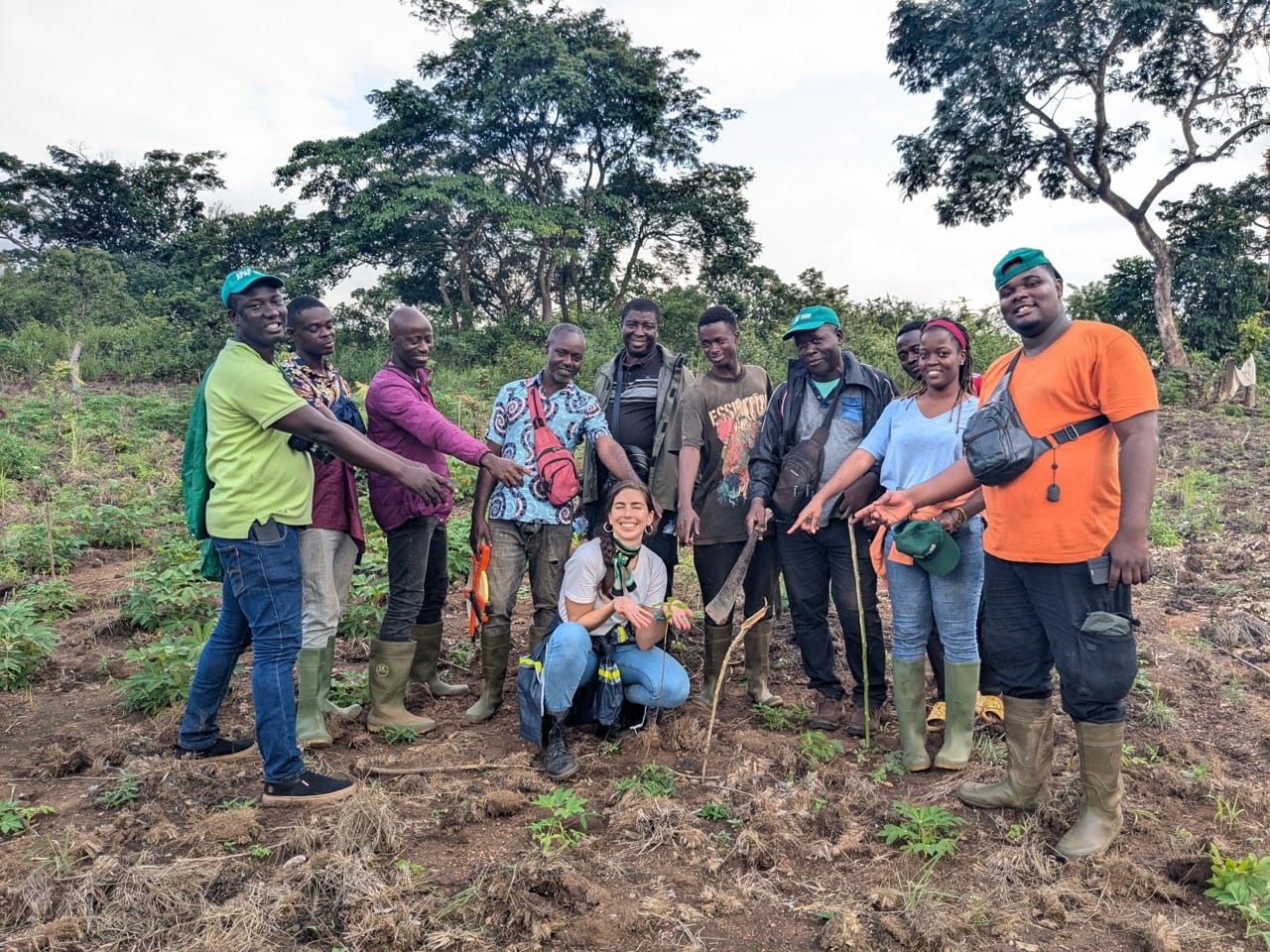
Cocoa farmer Kpokpoe Kossi; Antonia with the APAF team at one of our sites
Measuring impact
The main objective of my visit was to monitor how many trees were growing. From over 1,500 sites, we randomly selected 19 and used density sampling to measure survival and growth.
The results were encouraging: survival rates averaged over 150%. This reflects not only the strong establishment of planted trees, but also growing awareness of natural regeneration thanks to the field officers. In other words, forests are coming back faster and stronger than expected.
Reflections
Walking through these farms and forests, I could see the difference: shade, diversity, and life returning to the land - but most importantly, thriving plots. Agroforestry is not a quick fix, as trees take years to mature, but it is a lasting solution.
Often the hardest part is convincing farmers that agroforestry and fertilizer trees yield better and longer lasting results than expensive chemical fertilizers. Luckily, APAF’s long presence means other farmers can see the results on nearby plots and welcome their advice.
Agroforestry allows farmers to earn a living while restoring ecosystems, giving cocoa a chance to be grown in harmony with nature rather than at its expense. Ecosia’s partnership with APAF in Togo is young, but already showing results. With millions more trees to come, the vision is clear: a more resilient environment where both people and nature can thrive.
